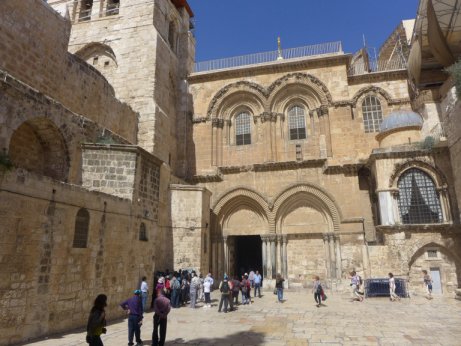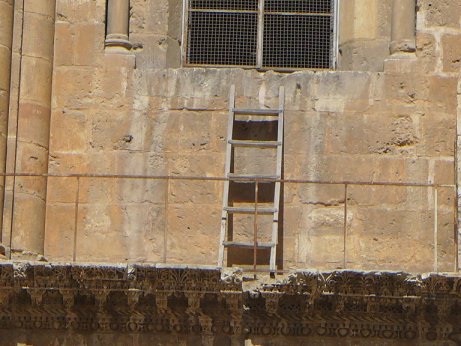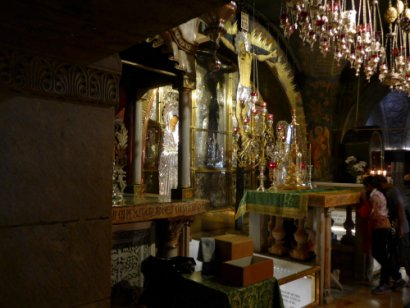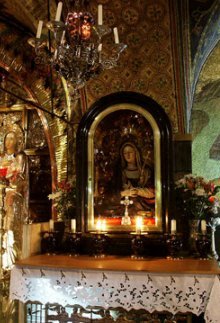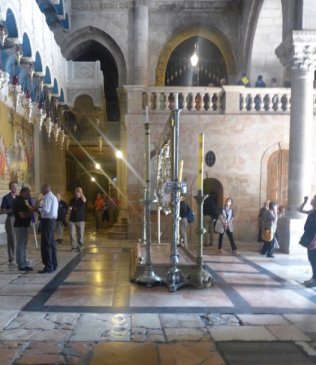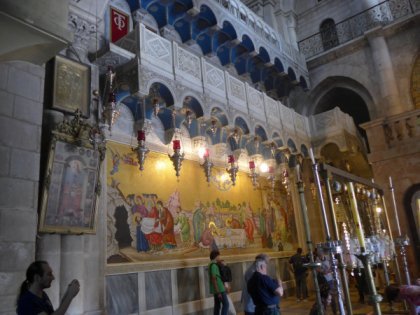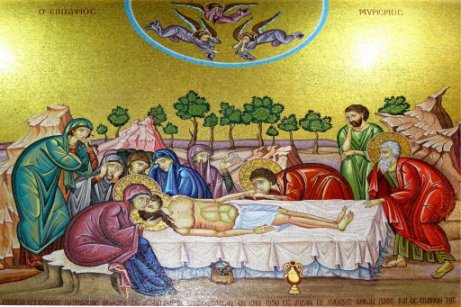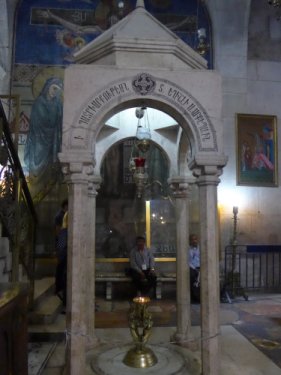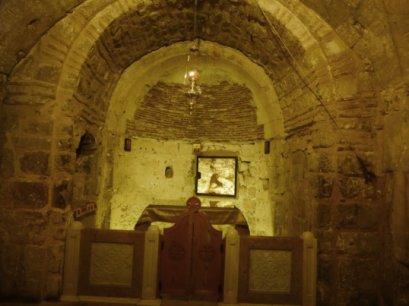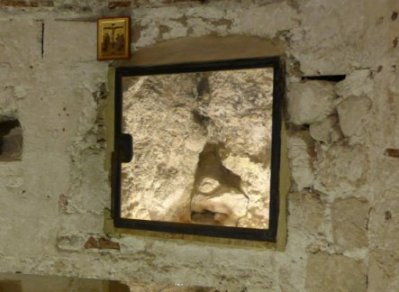|
The Holy Sepulchre in Jerusalem |
|
|
|
|
|
|
|
|
Squeeze through the narrow gateway between the tourist shops and you will find yourself in the Parvis, the courtyard of the Holy Sepulchre. On the right is the Franks chapel, more correctly called the Chapel of Our Lady of Sorrows. Traditionally the site of the stripping of Christ, it once offered an alternative route to the Calvary chapel, used when the church was closed. On the left, the central Greek chapel was once a baptistery dedicated to John the Baptist. |
|
|
|
|
| The
immovable ladder A symbol of why so little progress is made with anything at the Holy Sepulchre. For any change to be made, all six Christian orders have to agree, and they never do. Consequently, this ladder, left behind by an absent-minded local builder, has never moved. It was first mentioned in 1757. Now head inside the non-bricked up door, turn right and climb the stairs. This will take you to the two Calvary chapels. They are situated on top of the rock of Calvary, a small rocky outcrop five metres high enclosed inside this part of the building. |
|
|
|
|
The Greek Calvary shown below is considered to be the site of the crucifixion itself. |
|
|
|
|
| The Latin Calvary chapel (below left) is said to be where Christ was nailed to the Cross. Between this and the Greek Calvary is an altar (below right), known as the Altar of Our Lady of Sorrows. It is considered by some to be the location of the Deposition, where the Virgin wept over the body of Christ. Not everyone agrees, though. To visit the alternative go back down the stairs and find the Stone of Unction. | |
|
|
|
The Stone of Unction (below) is close to the entrance of the church. In the photograph below left the Calvary chapels are visible on the balcony behind it. On the wall behind, facing the entrance, is a modern mosaic. |
|
|
|
|
|
|
|
|
|
|
Further along, the canopied Armenian shrine is said to mark the spot where the three Marys observed the events at the tomb of Christ. The mosaic behind dates from the 1970s. |
|
|
|
|
Head back towards the Calvary chapels and take the passageway to the left of them. On the right is the Chapel of Adam, directly underneath the area in front of the Greek Calvary chapel. Behind the altar a limestone rock face is visible. This is the side of the rock of Calvary, and here, traditionally, Adam was buried, though other faiths do not agree with this! Visible through the window shown below right is a crack in the rock, said to have been caused by the earthquake that happened at the moment of Christ's death. |
|
|
|
|

